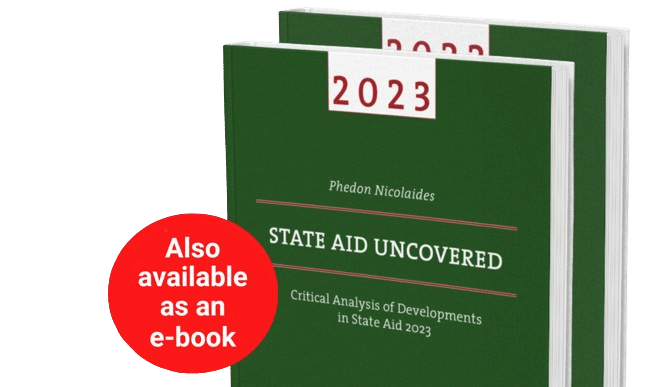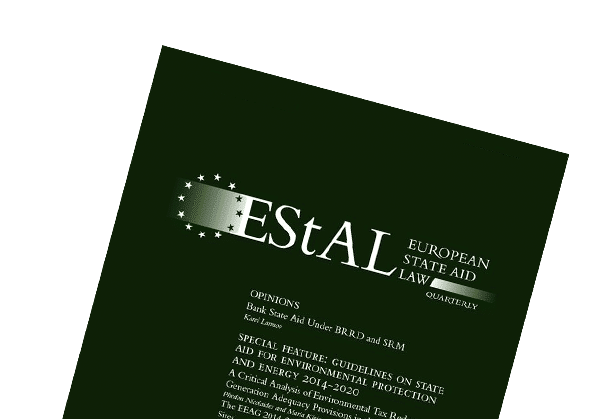
Introduction
In a Communication that was published on 9 March 2023, the Commission announced extensive amendments to the GBER.[1] A 100-page annex to the Communication provided the legal text of the draft regulation that would revise Regulation 651/2014.[2]
The amendments aim to:
- Ensure consistency between the GBER and new State aid guidelines.
- Bring the GBER in line with the EU policy priorities as expressed in the European Green Deal and the Industrial and Digital Strategy.
- Enable Member States to support economic recovery from the effects of the covid-19 pandemic and counteract the negative impact from Russia’s invasion of Ukraine.
The main changes, as listed in the Communication, are as follows:
- An extension and facilitation of the possibilities for aid in the area of environmental protection and energy, such as to support the rollout of renewable energy, facilitate investments in green hydrogen, support decarbonisation projects, increase energy efficiency or support green mobility.
- A facilitation of the implementation of certain ICPEI-related projects by means of higher aid intensities and notification thresholds.
- An extension of the possibilities for training and reskilling via an increase of the notification threshold for training aid to EUR 3 million.
- The introduction of new Articles to block exempt aid involved in measures set up by Member States to regulate prices for energy (electricity, gas and heat produced from natural gas or electricity).
- A very significant increase of notification thresholds for environmental aid as well as aid for RDI projects.
- A general increase of thresholds in the GBER even beyond the areas under specific review to cater for the longer period of validity of the rules.
- More broadly aligning the provisions of the GBER with the new Regional Aid Guidelines; the Climate, Energy and Environmental State aid Guidelines; the Risk Finance Guidelines; the Research, Development and Innovation Framework and the Broadband Guidelines.
- A prolongation of the GBER until the end of 2026, to provide for legal certainty and regulatory stability.
The draft regulation contains extensive amendments to almost all provisions of the GBER. This makes it is difficult to appreciate their overall impact for the simple reason that one has to read the new text next to the existing text of the GBER which already exceeds 120 pages. Therefore, instead of examining the forthcoming changes in the numerical sequence they are presented in the draft regulation, it is easier to comprehend their significance when they are placed in the context of the different types of aid allowed by the GBER. Then the widening in the scope of the GBER and the increase in the various thresholds become more visible. Both of these changes signify what I will call later the “generous” nature of the revised GBER.
The numbers in brackets below indicate the relevant articles in the current GBER.
Regional aid
The threshold for large investment projects is raised to EUR 55 million [from EUR 50 million] and the threshold for calculating notifiable aid and for calculating the “scaled-down” allowable aid is raised to EUR 110 million [from EUR 100 million]. [Article 2]
Therefore, the notification ceilings for the various rates of aid intensity applicable to different regions are also raised. [Article 4]
Aid to the synthetic fibres sector is now allowed. [Article 13]
SMEs
Higher notification ceilings are defined. For example, investment aid for SMEs is raised to EUR 8.25 million [from EUR 7.5 million]. [Article 4]
Investment aid and job-creation aid can now be combined. [Article 17]
New Article 19c is added: Aid to microenterprises in the form of public interventions concerning the supply of electricity, gas or heat.
New Article 19d is added: Aid to SMEs in the form of temporary public interventions concerning the supply of electricity, gas or heat produced from natural gas or electricity to mitigate the impact of price increases following Russia’s war of aggression against Ukraine.
Risk finance
Higher notification ceilings are defined. For example, the maximum amount of aid is raised to EUR 16.5 million [from EUR 15 million]. [Article 4]
Article 21 is replaced by new text. It allows funding up to EUR 16.5 million from EUR 15 million.
A new Article 21a is added: Risk finance aid to SMEs in the form of tax incentives for private investors who are natural persons.
RDI
Higher notification ceilings are defined. [Article 4] They main ones are as follows:
Fundamental research: EUR 55 million [from EUR 40 million].
Industrial research: EUR 35 million [from EUR 20 million].
Experimental development: EUR 25 million [from EUR 15 million].
Research infrastructures: EUR 35 million [from EUR 20 million].
*Testing and experimentation infrastructures: EUR 25 million.
Innovation clusters: EUR 10 million [from EUR 7.5 million].
Article 25 now allows the use of a simplified cost approach in the form of a flat rate. It also allows for bonuses of 15% and 5% for R&D carried in assisted areas and 25% for projects selected in the context of multi-Member State programmes.
A new Article 25e is added: Aid involved in the co-funding of projects supported by the European Defence Fund or the European Defence Industrial Development Programme.
Article 26 now allows investment aid up to 60% [from 50%].
A new Article 26a is added: Investment aid for testing and experimentation infrastructures.
Training
Higher notification ceilings are defined. The threshold is raised to EUR 3 million [from EUR 2 million]. [Article 4]
Environmental protection and energy aid
Higher notification ceilings are defined. [Article 4]
Recharging infrastructure: Notification threshold of EUR 30 million [from EUR 15 million].
Operating aid for renewable electricity: Notification threshold of EUR 30 million [from EUR 15 million].
Energy infrastructure: Notification threshold of EUR 70 million [from EUR 50 million].
Article 36 is extensively amended and has now a wider scope covering environmental protection in general, not just for exceeding EU standards. It also allows aid for decarbonisation.
Article 36a is extensively amended. The aid is raised to 100% of investment costs if it is granted through competitive bidding. The existing aid intensity is 40% of eligible costs.
A new Article 36b is added: Investment aid for the acquisition of clean vehicles or zero-emission vehicles and for the retrofitting of vehicles. The aid can be up to 100% of eligible costs if it is granted through competitive bidding.
Article 37 is deleted [investment aid for early adaptation to future Union standards].
Article 38 is extensively amended. The aid can be up to 100% of investment costs if it is granted through competitive bidding.
A new Article 38a is added: Investment aid for energy efficiency measures in buildings.
A new Article 38b is added: Aid for the facilitation of energy performance contracting.
Article 39 is extensively amended.
Article 40 is deleted [Investment aid for high-efficiency cogeneration].
Article 41 is extensively amended.
Article 42 is extensively amended.
Article 43 is extensively amended.
Article 44 is replaced by new text.
A new Article 44a is added: Aid in the form of reductions in environmental taxes or parafiscal levies.
Articles 45 & 46 are replaced by new text.
Article 47 is extensively amended.
Article 48 & 49 are replaced by new text.
There are also changes in the section on broadband networks and mobile networks.
A new Article 52d is added: Aid for backhaul networks.
The provisions of the section on ports and of the section on InvestEU are amended too.
It is also important to note that the threshold for publication of individual awards is lowered to EUR 100,000 from EUR 500,000. [Article 9]
Lastly, the period of validity of the GBER is extended to 31 December 2026. [Article 59]
An assessment
The Commission adopted the first GBER in 2008 in order to simplify State aid rules and ensure their uniform application by Member States. The new version that has emerged from the latest round of amendments is very long, much wider in scope and more complex. At the same time, however, a number of provisions in the new text are clearer. For example, instead of stipulating that the “aid shall not exceed the difference between eligible costs and the operating profit of the investment” with respect to support of energy infrastructure, the new text simply says that the “aid intensity may reach up to 100% of the funding gap” [Article 48]. It is now explicitly required of Member States to use the funding gap methodology. Another example of additional clarity is the distinction between investment aid to the owner of innovation clusters and operating aid to the operator of the cluster [Article 27].
For the first time in State aid regulations and guidelines, the draft regulation introduces specific rules on microenterprises. These rules concern relief from high energy prices in the new Article 19c.
The wider scope of the GBER offers now many options to Member States to support their economies. Given the number and variety of options for Member States, we should expect that the types of State aid will differ significantly across the EU.
The types of aid that have been more thoroughly modified by the latest amendments are those that target SMEs, risk finance, RDI and environmental protection and energy efficiency. The provisions on environmental and energy aid have been so extensively revised and rearranged, with old articles deleted and new ones inserted, that it is difficult to compare the old and the new text.
However, at least two firm conclusions can be drawn. First, the higher notification thresholds will result in even fewer formal notifications to the Commission. Even when taking into account an inflation rate of about 10%, the increase of the notification thresholds for some types of State aid has been much higher at 67% for experimental development, 75% for industrial research and research infrastructure, or 100% for recharging infrastructure and operating aid for renewable electricity. With respect to aid for SMEs, risk finance and RDI, the increase of the thresholds is a bit puzzling because very few notifications for these types of aid were submitted to the Commission in the period between 2014 to 2021.
Second, the revised GBER is more generous. For many types of aid, the maximum aid intensity rates have been raised, in some cases substantially. Where the aid is granted through competitive procedures or on the basis of the funding gap methodology, the aid intensity can be up to 100%.
In conclusion, not only will Member States be able to support their economies with more diverse instruments without the administrative burden of notification, but they will also be able to grant larger amounts of aid. This generosity of the revised GBER is likely to prove more useful to those Member States with sufficient fiscal space.


